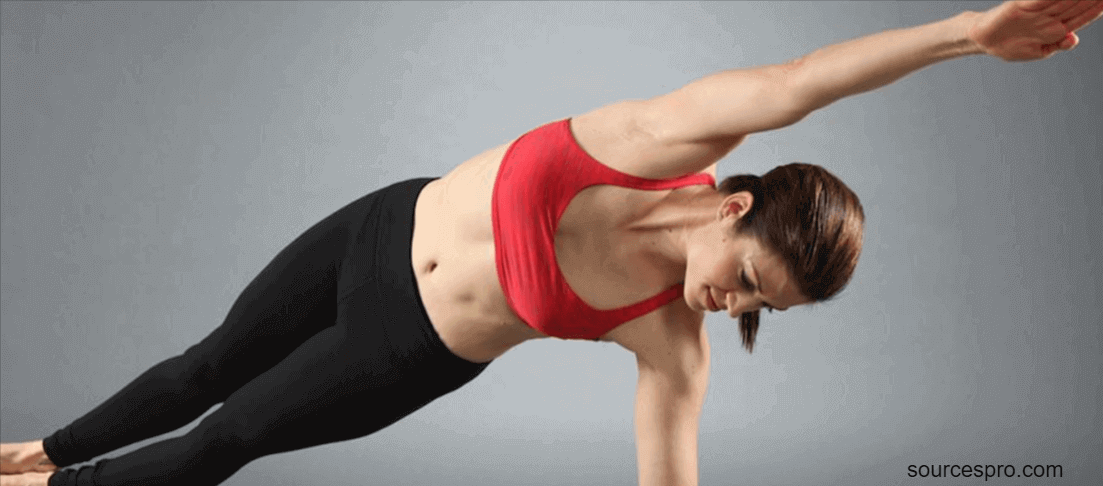Effective Yogasanas to Improve Memory
Yogasanas to Improve Memory: Discover the cognitive benefits of yogasanas, blending mindful postures and controlled breathing. Recent studies highlight their effectiveness in enhancing memory. This ancient practice offers a concise yet powerful path to improved mental vitality.
There are several yoga asanas or postures that can be beneficial for improving memory. Here are a few:
Padmasana (Lotus Pose)
Padmasana helps to improve focus and concentration, which can ultimately enhance memory power.
Padmasana, also known as the Lotus Pose, is a popular yogasana that can help improve memory. This pose involves sitting cross-legged with the feet placed on opposite thighs and the hands resting on the knees. It is believed that practicing Padmasana can help calm the mind, reduce stress and anxiety, and increase focus and concentration.
To practice Padmasana, sit on a yoga mat with your legs stretched out in front of you. Bend your right knee and place your foot on top of your left thigh. Then, bend your left knee and place it on top of your right thigh. Rest your hands on your knees with palms facing up or down. Close your eyes and focus on breathing deeply for several minutes.
In addition to improving memory, practicing Padmasana yogasana regularly can also help alleviate menstrual discomfort, improve digestion, strengthen leg muscles, and promote relaxation. However, it’s important to approach this pose with caution if you have knee or hip injuries or limited flexibility in these areas. Always listen to your body and modify the pose as needed to avoid discomfort or injury.
Also Read: wellhealthorganic.com:health-hazards-of-prolonged-sitting
Vajrasana (Diamond Pose)
This asana helps to reduce stress and anxiety, which can negatively impact memory. It also improves blood flow to the brain, which can enhance cognitive function.
Vajrasana, also known as Diamond Pose, is a seated posture yogasana that has numerous health benefits. This asana helps improve digestion and relieve gas and bloating in the stomach. Apart from this, Vajrasana yogasana plays a significant role in improving memory by increasing blood circulation to the brain.
The pose is effortless to do – one needs to kneel on the yoga mat with toes pointing outwards and sit back on their heels. Inhale deeply while sitting up straight with your hands resting on your knees. Exhale slowly while closing your eyes and focusing your attention on breathing.
If practiced regularly, Vajrasana can help calm the mind and reduce stress levels, which ultimately results in improved concentration and better memory retention. It’s essential to maintain this posture for at least 5-10 minutes after meals for optimal digestion benefits.
Sarvangasana (Shoulder Stand)
Sarvangasana is known to stimulate the thyroid gland, which regulates metabolism and can improve memory power. It also improves blood flow to the brain.
Sarvangasana, also known as the Shoulder Stand pose yogasana , is one of the most effective yoga postures to improve memory. This simple yet powerful pose involves raising your legs and lower body toward the sky while balancing on your shoulders. By doing so, you stimulate blood flow to your brain, which in turn helps to increase mental alertness and concentration.
In addition to improving memory, Sarvangasana yogasana has several other benefits for the mind and body. It can help improve thyroid function, reduce stress and anxiety levels, boost metabolism, and promote better sleep. Regular practice of this pose can also help strengthen the neck muscles and spine.
To perform Sarvangasana safely, it’s important to ensure that your shoulders are properly supported with a blanket or bolster. Start by lying down on your back with your arms at your sides. Lift both legs towards the ceiling as you inhale deeply, then use your hands to support your hips as you lift them off the ground. Keep breathing deeply as you hold this yogasana pose for several minutes before releasing it back down to the ground.
Also Read: wellhealthorganic.com:facial-fitness-anti-aging-facial-exercises-to-look-younger-every-day
Bhramari Pranayama (Bee Breath)
Bhramari Pranayama is a breathing exercise that helps to reduce stress and anxiety, which can negatively impact memory. It also improves cognitive function and memory power.
Bhramari Pranayama, also known as Bee Breath, is a yoga breathing technique that can help improve memory and concentration. This pranayama yogasana involves closing the eyes and inhaling deeply through the nose. Then, while exhaling slowly, make a humming sound like that of a bee.
This breathing technique helps to calm the mind and reduce stress levels. As we breathe out for longer than we breathe in, it triggers a relaxation response in our bodies. Doing this regularly helps to improve mental clarity and reduces anxiety and depression levels too.
Practicing Bhramari Pranayama daily has many benefits such as improving cognitive function by increasing cerebral blood flow to the brain, which nourishes brain cells with oxygen and nutrients necessary for optimal functioning. Additionally, this practice helps to boost memory retention by strengthening neural connections between neurons in the brain’s hippocampus region—the part responsible for processing long-term memories.
Viparita Karani (Legs-Up-The-Wall Pose)
This asana helps to reduce stress and anxiety and improves blood flow to the brain. It can also help to calm the mind, which can enhance memory power.
Viparita Karani, also known as Legs-Up-The-Wall Pose, is a simple yoga pose that offers numerous benefits to the body and mind. This pose involves lying on your back with your legs extended up against a wall or any vertical surface. It helps in reducing stress and anxiety levels, improving blood circulation, and aiding digestion.
Apart from these physical benefits, Viparita Karani is also an effective yogasana for improving memory and concentration levels. When you practice this pose regularly, it helps in calming the mind by reducing mental chatter and promoting relaxation. As a result, you can focus better and retain information more effectively.
Incorporating Viparita Karani into your daily yoga routine can prove beneficial not only for your physical health but also for enhancing cognitive abilities such as memory and concentration. So next time you feel overwhelmed or need to boost your brainpower before an important task, try practicing this simple yet powerful yogasana!
Pranayama (Deep Breathing)
Practicing deep breathing techniques such as Anulom Vilom, Kapalbhati, and Bhastrika can help to reduce stress and anxiety, improve cognitive function and enhance memory power.
Pranayama, or deep breathing, is an integral part of yoga practice. This breathing technique helps to improve memory and concentration by increasing oxygenation in the brain. There are different types of pranayama that one can practice, including Nadi Shodhana (alternate nostril breathing), Kapalabhati (breath of fire), and Bhramari (bee breath).
Nadi Shodhana involves alternating between the right and left nostrils while inhaling and exhaling. This technique helps to balance the flow of energy in the body, resulting in improved mental clarity and focus. Kapalabhati is a rapid exhalation followed by a passive inhalation that helps to clear out any stale air from the lungs. It also stimulates blood circulation in the brain and enhances cognitive function.
Bhramari is a calming pranayama technique that involves making a humming sound while exhaling. It has been proven to reduce stress levels and promote relaxation, which can have a positive impact on memory retention. Incorporating pranayama into your daily yoga practice can help you achieve better memory recall and increased mental clarity for tasks that require focus or concentration.
Remember, consistency is key when practicing yoga. It is important to practice these asanas and breathing techniques regularly to see significant improvements in memory power.
Conclusion
In conclusion, incorporating yogasanas into your daily routine can be a great way to improve your memory. As we age, our brains start to decline and it becomes more difficult to remember things. Practicing yogasanas such as the Padmasana or Lotus Pose can help increase blood flow to the brain, boosting its cognitive functions.
In addition, practicing Pranayama techniques like the Bhramari Pranayama or Humming Bee Breath can also help calm the mind and reduce stress levels which in turn improves memory retention. Focusing on mindful breathing techniques during yoga practice also helps improve concentration and focus.
Therefore, if you are considering improving your memory capacity, do not hesitate to try out these yogasanas. They are easy to incorporate into your daily routine and have numerous benefits beyond just improving memory. With regular practice of yogasanas, you will notice an improvement in overall mental clarity and well-being too!
Also Read: wellhealthorganic.com:alcohol-consumption-good-for-heart-health-new-study-says-no
FAQ
Q: How often should I practice yogasanas to improve memory?
A: Consistency is key when practicing yoga asanas to improve memory. It is recommended to practice these asanas at least 3-4 times a week to see significant improvements in memory power.
Q: Can yoga asanas alone improve memory power?
A: While practicing yoga asanas can be beneficial for improving memory power, it is important to also adopt healthy lifestyle habits such as getting adequate sleep, maintaining a healthy diet, reducing stress, and engaging in regular physical activity.
Q: Can yoga asanas be harmful to people with certain medical conditions?
A: It is important to consult with a healthcare provider before starting any new exercise regimen, including yoga asanas. Some asanas may not be suitable for people with certain medical conditions, such as high blood pressure or back problems.
Q: Can practicing yoga asanas improve other cognitive functions besides memory?
A: Yes, practicing yoga asanas can have a positive impact on other cognitive functions such as focus, attention, and concentration. It can also help to reduce stress and anxiety, which can have a beneficial effect on overall cognitive function.
Q: How long does it take to see improvements in memory power from practicing yoga asanas?
A: The time it takes to see improvements in memory power from practicing yoga asanas can vary from person to person. However, regular practice over several weeks or months can lead to noticeable improvements in memory power.








